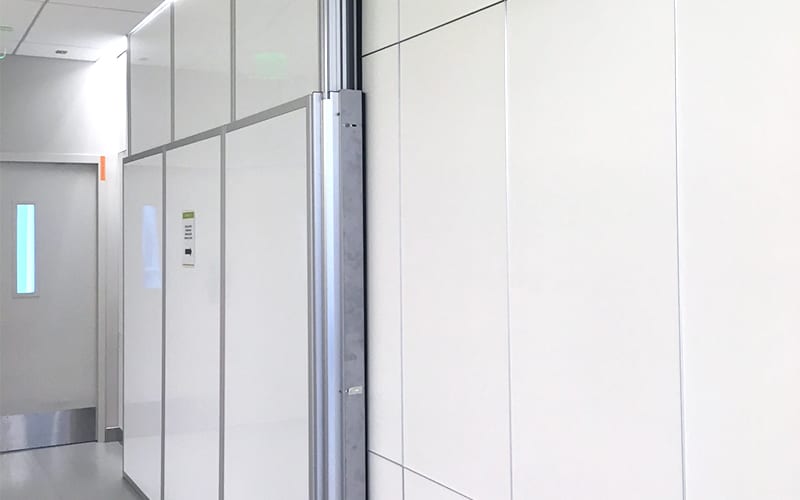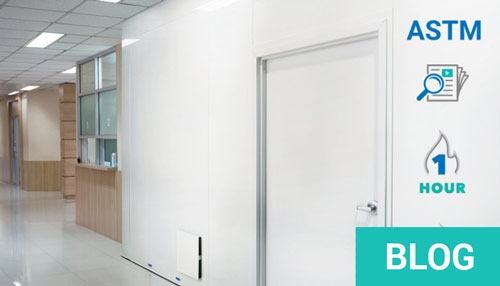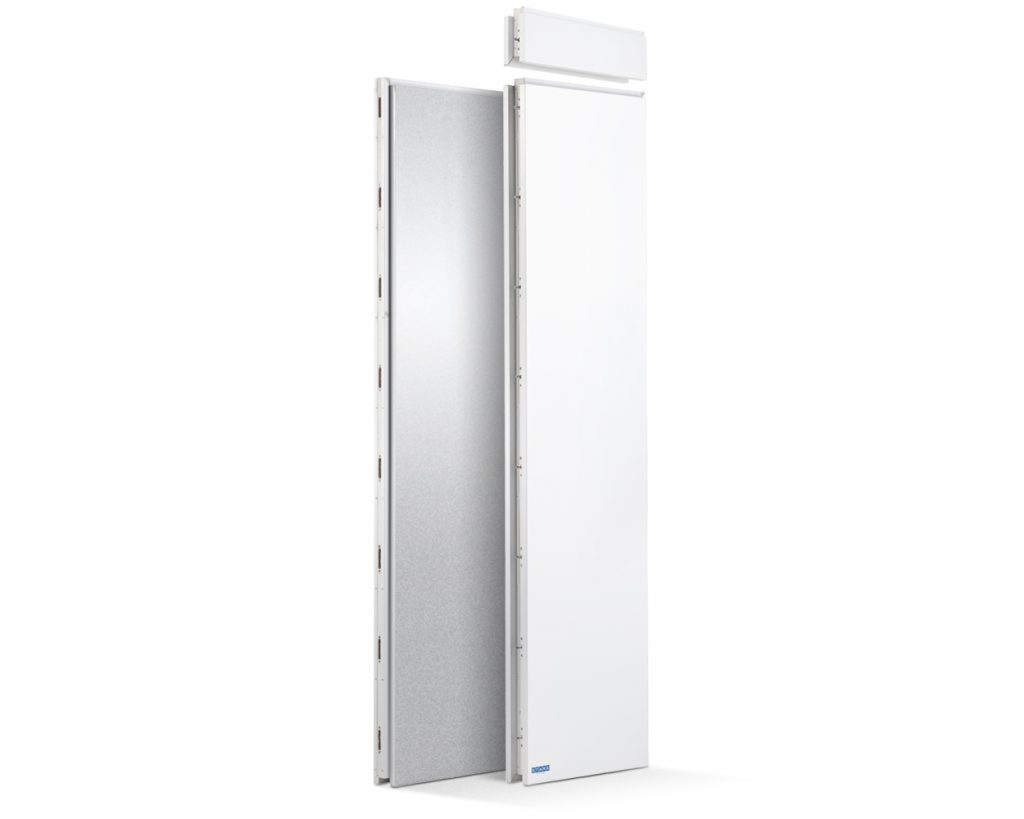Disruption-Free Barrier System Outperforms Drywall in Sensitive Setting Eskenazi Health of Indianapolis Indiana is one of America’s largest essential health care systems, providing treatment and services for residents of Marion County and Central Indiana. The Sandra Eskenazi Mental Health Center was the first community mental …
ASTM E90 Ratings And Temporary Construction Walls
Rugged Construction Reduces Noise

RealWall’s™ three-layer temporary construction barrier sandwiches a noise-reducing urethane foam core between an aluminum front and a galvanized steel back, which reduces construction noise by up to 50%, or an STC rating of 21 at noise levels common to a construction zone.
Plastic sheeting and polycarbonate dust barriers don’t offer any level of sound attenuation.
Our FireblockWall™ fire and dust barrier has been tested with an STC rating of 40.
Quiet Installation
Not only does RealWall™ reduce noise once installed, but there is also no noise in the assembly and disassembly because of a quick, quiet and easy-to-use disruption-free lift and drop connection method. Compare this to the disruption associated with drywall being sawed, drilled and hammered.
Maintain Client and Patient Satisfaction
In critical environments, from healthcare facilities to corporate offices, construction noise is not tolerable. STARC’s lineup of reusable dust barriers are designed with STC ratings in mind to reduce noise and minimize disruption around patients, employees, and customers. Increase patient satisfaction scores or just maintain a quiet office environment with STARC’s RealWall sound attenuation panels.
What Is ASTM E90 For Sound Transmission?
A wall system’s sound attenuation, or ability to reduce sound pressure, can be measured in laboratory conditions through a test published by ASTM under Standard E90 – Laboratory Measurement of Airborne Sound Transmission Loss of Building Partitions and Elements.
What does the test require? A wall assembly 8 ft. square is to be installed in the aperture of the test chamber. Then a multi-spectral frequency is produced inside the chamber at preset amplification and with microphones arrayed outside the wall. This measures the response in decibels at multiple locations.
The sound reduction is charted across the input frequency spectrum and the result is processed through an algorithm to determine a sound reduction value, known as the Sound Transmission Class (STC value). Common interior permanent walls may be built to have an STC value between 30 and 56.




